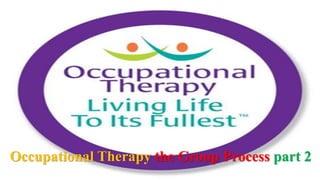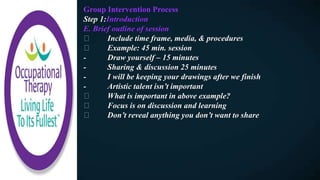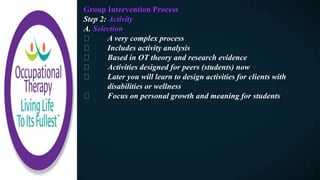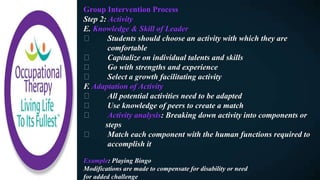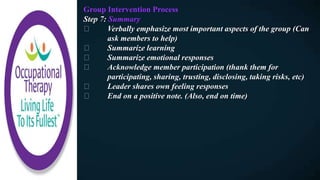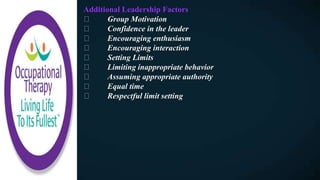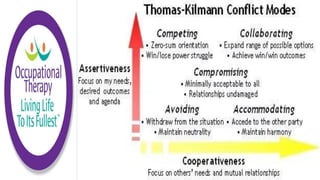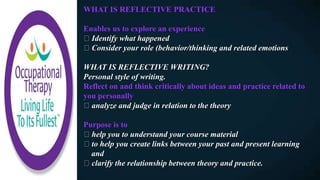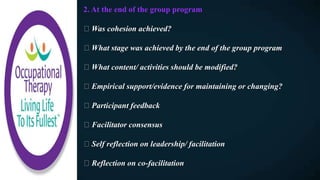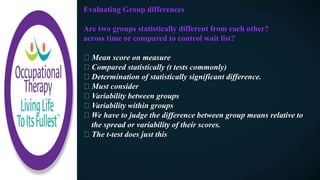This document outlines the seven steps of the group intervention process used in occupational therapy: introduction, activity, sharing, processing, generalizing, application, and summary. The introduction step involves welcoming group members, setting expectations, and outlining goals. The activity step requires selecting a therapeutic activity matched to members' capacities. Sharing and processing involve discussing members' experiences. Generalizing identifies lessons learned. Application relates lessons to real life. The summary reviews key points and acknowledges participation. Additional factors for effective group leadership include motivation, role modeling, communication skills, limit setting, and personal qualities like courage and willingness.
